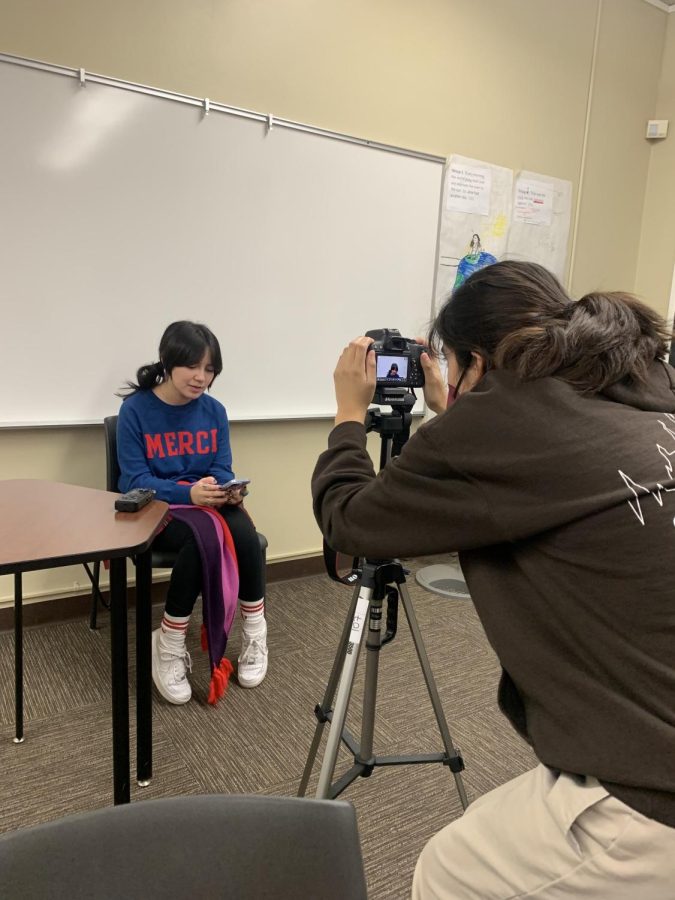The Problem with Latino Representation in Film
It’s up to future generations to break through Hollywood’s glass ceiling and get their stories into a writers room.
PASADENA, California — Stepping through the wide glass doors into a velvet-carpeted room, a strong smell of popcorn overpowers the senses. In the La Canada Regal Cinemas movie theater, tall posters advertise Wes Anderson’s The French Dispatch, the infamous House of Gucci, and Denis Villeneuve’s Dune. At the end of a row of movies starring mainly white actors sits a colorful poster for Pixar’s newest film, Encanto. Immediately, I’m perplexed, even angry. I hardly even knew that a movie about a young Colombian girl was coming out in theaters. Why did Pixar barely advertise a film sharing a Latino story? Why is this the only movie poster where the main character is Latina? Why is it so difficult to find a good film that features Latino characters, actors, writers, and directors?
In reality, there is a disappointingly low number of Latino representation on screen and behind the scenes. According to a 2019 study conducted by the USC Annenberg Inclusion Initiative, “Only 4% of directors were Latinos out of the 1,335 holding top jobs. Forty-eight of those directors were male and 1 was female”. The study found that only 4.5% of all speaking characters in films from 2019 were Latino characters. And though Latino people make up the largest ethnic group in America, they are still drastically underrepresented in the media we consume. Additionally, when a Latino director is attached to a film, the importance of Latino characters on screen increases from 4% to 13%. Having Latino influence behind the scenes is crucial in increasing Latino representation on screen.
Directors and producers also have influence over the type of Latino representation on screen. Daniel Graulau, a Puerto Rican- American actor who has appeared in multiple television shows such as Netflix’s On My Block and the upcoming Clint Eastwood film Cry Macho, explained he has noticed that Latino actors are often “pigeon holed as the laborer or the robber,” very stereotypical roles associated with Latino people. Graulau furthers that “when you get more people behind the camera, when you get producers, when you get writers, when you get showrunners” that’s when a project can be truly “accurate to the representation of what Latino is in front of the camera”. The power of Latino representation stems from the creators of a film or television show thus, it’s critical to evaluate the state of Latino representation behind the scenes.
The issue of a lack of Latino representation within the entertainment industry is likely a direct result of the insufficiency of economic, educational, and artistic opportunities offered to Latino people. According to the United States Census Bureau, “The share of Hispanics in poverty was 1.5 times more than their share in the general population. Hispanics comprised 18.7% of the total population, but 28.1% of the population in poverty.” Historically, Latino people and other minorities have been forced into poverty by government systems such as redlining, the act of denying communities equal access to opportunities and resources because of location and population. Growing up in impoverished communities further limits creative opportunities such as introduction to the film industry for Latino people who struggle to support themselves financially.
Because Latino youth are often not given opportunities to pursue careers in the entertainment industry, an expansive gap exists between Latino representation and white representation within the entertainment we consume. Historically, the few Latino people who enter the American film industry often do not receive the same recognition nor opportunities white film producers, directors, writers, or actors. Ever since the 1930s when the emergence of Hollywood popularized cinema in America, Eurocentric stories have been the focus of the majority of movies and television. It is incredibly difficult for Latino stories to become hit movies and oftentimes, independent films revolving around Latino characters fly under the radar. Only recently have Latino-centered movies become mainstream. Movies such as Disney Pixar’s Coco or shows like Netflix’s On My Block have gained popularity among fans of diverse backgrounds. But, the lack of publicity for Disney’s Encanto proves how Latino films do not receive the same marketing treatment as many Eurocentric films.
Furthermore, misrepresentation and blatant exclusion of Latino people from film and television creates negative stereotypes and is harmful for the mental health of Latino youth. Sofia Olona ’23, an assistant director for Mayfield Senior’s theater productions, has expressed interest in working in theater or film production in the future but revealed how misrepresentation of Latinos has affected her relationship with Western media.
“I think, just in general, there’s too much of a focus on the tragedy,” Olona said, noting a similar narrative of Latino identity is told throughout film and television.
“The great part of having diverse faces on TV and exposing a general American audience to different identities is that it just becomes part of everyday life,” Olona said, suggesting that by hiring more Latino writers, directors, and producers, Latino stories may become more normalized in Western media.
Olona expressed a similar opinion held by many other Latino youth: that because of their skin color, last name, or socioeconomic status, many Latinos will be unable to achieve success in the film industry.
“I don’t always view myself as an outsider. I didn’t grow up with the same poverty that my parents or grandparents did,” Olona said. “But when I view those numbers, it just makes me realize how little control I have over things.” Whether it’s discovering a family history of magic like in the movie Encanto or navigating young adulthood and mother-daughter relationships like in the film Real Women Have Curves, movies that tell Latino stories and star Latino actors are critical to breaking stereotypes and uplifting Latino voices through film.
Olona concluded that even if “someone else views some part of my identity, or some part of my appearance that I have no control over” as negative, her ethnicity and culture is still “something [she’s] so proud of.”
It’s up to future generations to break through Hollywood’s glass ceiling and get their stories into a writers room.

Madison Rojas is a senior at Mayfield Senior School and currently serves as the Editor-in-Chief of The Mayfield Crier. Madison has received multiple awards...


